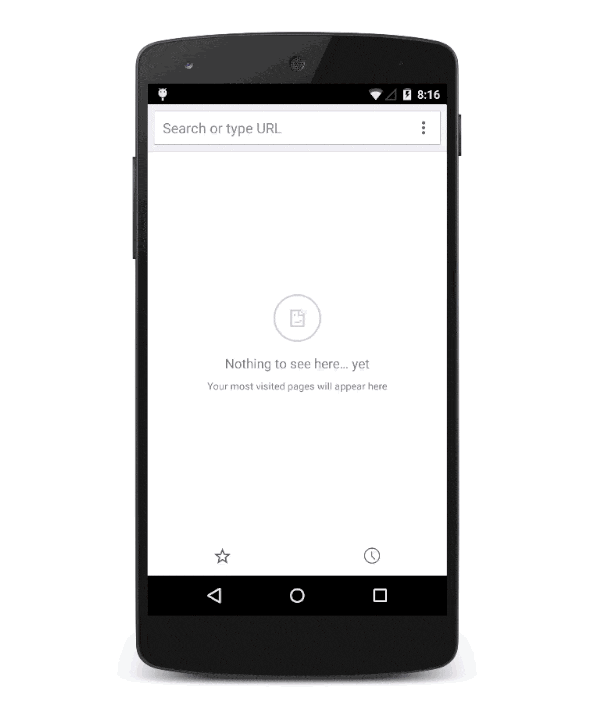A positive mobile experience is key to business success.
But actually getting there can be a bit of a challenge, especially when it comes to building not one but TWO apps, to reach customers on both iOS and Android.
The result? Many organizations revert to a mobile web app or a responsive site instead.
It might do the job, but it loses out in a big way to the experience of a native application.
But now there’s another option.
In this article, we explore the benefits of hybrid apps and progressive web apps.
What are Hybrid Apps?
Hybrid apps are applications that are a combination of native apps and web apps. As a reminder, native apps are apps that are designed specifically for a mobile platform, either Android or iOS.
Something like Twitter, for instance, is a native app.
Web apps are effectively websites built in HTML5 that incorporate many of the aspects that make native apps great to use. This includes:
-
Access to push notifications on your phone
-
Access to your phone’s camera and GPS
-
The ability to use gestures on your phone
-
Access to a device’s local storage (for offline functionality).
As we mentioned, a hybrid app sits somewhere between these two products to make something even cooler.
A hybrid app gives you the cost savings of building a single web app, but does an even better job of mimicking a native app. Specifically, they can run outside of a browser, giving them more of a native app feel.
Hybrid apps have a number of advantages that set them apart from both native and web-based mobile application.

Advantage over Native Apps: Hybrid Apps are Easy to Update and Inexpensive to Build
With only a single digital asset to keep up and running you need fewer updates, content synchronization is easier, and you get a seamless experience across all devices (no more “the Android app is great but the iOS one sucks” comments).
Plus, since you’re only building one experience instead of two, it’s going to be less costly to get out the door.
Advantage Over Web Apps: Your App Will Be Fast
Native apps might be the gold standard for speed, but a hybrid app isn’t exactly slow.
They’re much faster than mobile web apps because they aren't reliant on network communication. So even at peak times, your app is going to render quickly.
And if you’re looking at all mobile web solutions, a hybrid app is going to run considerably faster than a responsive website.
Advantage Over Web Apps: Your App Will Be Listed in the App Store
Google Play and the App Store have strict requirements for what’s allowed in. And they’re stern gatekeepers: you have to be native or hybrid to be listed.
If you’re going to put in the effort of building an app, it’s critical that you enable downloads through these stores.
While some companies have been resistant to partner with Apple and Google, unless you’re an Amazon-sized enterprise, it’s a non-starter to get customers away from these marketplaces.
Basically, if you’re going to build an app at all, you need to have it in app stores to drive downloads. Which means you’re building either a native app or a hybrid one — no web apps allowed.
Progressive Web Apps: the New Kid on the Block
So that’s the story with hybrid apps: the experience of native, but the price tag and ease-of-use of a web application.
But there’s a new kid on the block: progressive web apps.
Progressive Web Apps, or PWAs, are effectively another type of hybrid app. But, instead of being built on a more app-like framework, PWAs are built using more standard web technologies.
If you’re interested in the technical details of what makes a PWA a PWA, you can read about it right here. For the purposes of this article, we’ll simplify it to:
Progressive web apps are websites, but instead of offering a normal web experience, the website content is made more app-like via a shell, usually built using Angular or Vanilla JS or some such framework.
Of course, this product is gaining traction quickly, particularly because of Google’s enthusiasm for it, and it offers a number of perks for users and companies alike:
-
Existing content and development assets/processes can be kept the same/significantly reused.
-
They load extremely quickly and reliably, due to server workers caching locally.
-
They’re extremely fast
-
They live on the home screen of a phone, with a tappable icon (just like a native app)
-
They can (and often do) exist independently of the web browser.

animation via Google Developers
PWAs combine the best experiences of a native app (e.g. lives on the home screen & speed) with the back-end framework and connectivity that makes websites so appealing to developers.
Even more than hybrid apps, which, despite their benefits, can have a somewhat clunky construction, PWAs are effectively pushing the internet towards a mobile future in a more comprehensive way than ever before.
What’s Next?
The benefits of a native app have been entrenched for years. It’s common knowledge that the best experience is going to be provided by a mobile app.
But that competitive edge is beginning to fade. The line between what hybrid apps and PWAs can provide and what a native app can is narrowing. Hybrid apps and PWAs offer significant advantages to both the user and the app owner.
We think PWAs are the first step in the new mobile web. Mobile experiences will be refined and simple, and users will expect a native experience, whether they’re visiting your website for the first time or for the five-hundredth.
